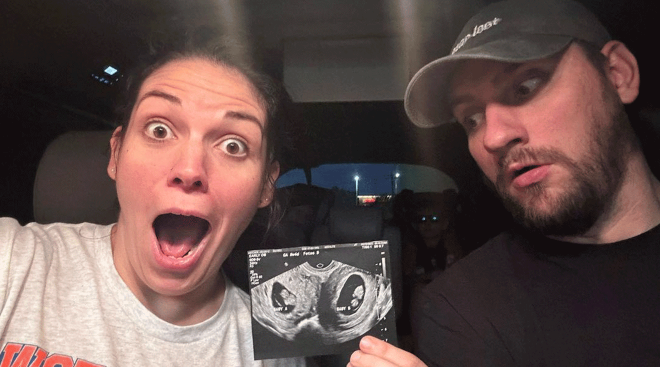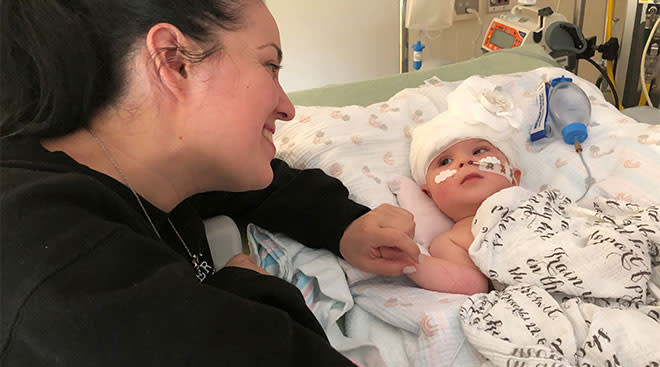7 Types of Twins – and What Makes Them All Different
When most people hear the word “twins,” they think either fraternal or identical twins. While these are the two most common types of twins, they aren’t the only ones. There are probably more kinds of twins than you think, including specific types of twins that fall under the fraternal or identical umbrella.
Twin births have become less rare over the last few decades. From 1980 to 2014, the number of twins being born in the United States increased by 79 percent. That rate has since gone down a bit; it declined 8 percent between 2014 and 2020. Nevertheless, twins are most definitely more common than they were back in the day, and this can likely be attributed to a rise in IVF, among other things.
Read on to find out more about the different varieties of twins, and what makes them different from each other.
Identical twins share all the same genomes (or genetic material) and are usually the same sex. Identical twins are a result of a single egg that’s fertilized by a single sperm, which then splits into two embryos during the very early stages of development. The two embryos will grow and develop separately, despite originating from the same fertilized egg.
While they usually look almost exactly alike, this isn’t always the case. Regardless of physical appearance, however, they still share all the same genetic material and are genetically identical, explains Jamie Stanhiser, MD, MSCR, a double board-certified physician who specializes in reproductive endocrinology and infertility. According to Stanhiser, while twins occur in about 3 percent of pregnancies, identical twins are a smaller subset, happening in approximately one third of twin pregnancies.
Fraternal twins occur when two separate eggs are fertilized by two separate sperm during the same pregnancy. Unlike identical twins, fraternal twins share only half of their genomes. “They’re two entirely different embryos with their own unique genetic material,” Stanhiser clarifies. “Fraternal twins are no more genetically similar than any other siblings, as they inherit different combinations of genes from their parents,” she adds.
Fraternal twins are much more common than identical twins. Fraternal twins account for about 70 percent of these twin occurrences.
Much less common than identical and fraternal twins are polar body twins, which are also known as half-identical twins or semi-identical twins. “Normally, when an egg is released from the ovary, it undergoes a division process called meiosis,” explains Stanhiser. “This process produces polar bodies—small cells that are excreted from the egg that contain genetic material but don’t have the potential to develop into embryos. Polar twins are an extremely rare phenomenon, where one egg and its polar body are both fertilized by different sperm.” While this type of twin is often called “half-identical,” Stanhiser says the babies are each genetically different—more like fraternal twins.
Don’t expect to hear about this type of twin that often. Stanhiser calls them “an exceptional occurrence in human reproduction,” and notes that they’re extremely rare. In fact, according to the Washington State Twin Registry, there’s no proof that polar body twins have ever occurred, as they say it’s unlikely that a fertilized polar body would be able to survive and develop into a normal embryo and fetus.
Mirror twins are actually a type of identical twins. Like identical twins, mirror twins originate from a single egg and are genetically identical. What makes them different is that their physical traits are mirror images of each other. If they looked at each other directly, it’d literally be like looking into a mirror. “This includes reversed features like left- and right-sided birthmarks, handedness and even the position of internal organs,” Stanhiser says.
This mirrored appearance is not totally understood, and Stanhiser notes that doctors believe it might occur during the early stages of embryo splitting. “The exact point of the split might influence how the embryos develop symmetrically or asymmetrically, leading to these mirrored traits,” she says. She also notes that this is a very rare variation of identical twins.
Conjoined twins describe twins who are born with their bodies physically connected. About 75 percent of conjoined twins are joined at least partially in the chest and can even share organs with one another. It’s not completely clear how this happens, although doctors have theories. One is that a single egg is fertilized, starts to split as it would in the case of identical twins, but then doesn’t fully split. The other theory is that two fertilized eggs are fused together early in development.
Conjoined twins are extremely rare and occur in about 1 in 50,000 to 1 in 200,000 births, says Janet Choi, MD, a double board-certified reproductive endocrinologist and ob-gyn and the chief medical officer at Progyny. According to Cleveland Clinic, many conjoined embryos don’t survive, and up to 60 percent will be stillborn. For conjoined twins who do survive and live beyond a few hours after birth, separation surgery can be possible, especially if they don’t share organs. This type of surgery happens about five times a year in the United States.
Parasitic twins, also called asymmetrical twins, are a form of conjoined twins. “This occurs when one twin stops developing during pregnancy and becomes physically dependent on the other twin,” Choi explains. The underdeveloped twin gets the name “parasitic” because it isn’t fully formed or functional and cannot exist without the other twin. In some cases, the more developed twin will end up with extra organs or limbs from their parasitic twin. It’s not exactly clear what causes parasitic twins, and Choi calls this a “rare and unique phenomenon.”
In simple terms, superfetation is when a person who is already pregnant becomes pregnant again—a second egg is fertilized and implants itself after a pregnancy has already begun. This leads to twins who have been conceived at different times. Scientists don’t know what causes superfetation.
“This is extraordinarily rare due to hormonal changes during pregnancy that typically prevent ovulation once a pregnancy has been formed,” Choi says. In fact, there is some debate on whether or not superfetation is actually a type of twin, as some believe it belongs in its own category.
All types of twins come with more risks than a single pregnancy, for both Mom and the babies. According to Stanhiser and Choi, these can include a higher risk of:
- Miscarriage
- Placental problems like placenta previa and placental abruption
- Gestational hypertension
- Gestational diabetes
- Preeclampsia
- C-section delivery
- Preterm delivery
- Low birth weight
- Intrauterine growth restriction
- Discordant growth
- Stillbirth
Each type of twin can come with their own unique risks as well, Choi notes. “For example, conjoined twins carry high risks for miscarriage and stillbirths, as well as preterm deliveries,” she says. “They may require complicated surgeries to help support ongoing life.”
Frequently Asked Questions
Can identical twins be different sexes?
It’s highly unlikely you’ll ever find a set of identical twins who are two different sexes. According to Dr. Stanhiser, identical twins are always the same sex since they share 100 percent of their genetic material. However, research notes that there’s a slim possibility identical twins can be different sexes, but it’s incredibly rare.
What’s the difference between fraternal and paternal twins?
Fraternal twins occur when two separate eggs are fertilized by two individual sperm and develop alongside each other at the same time. Paternal twins is just another term for identical twins, which occur when one single egg is fertilized by one single sperm, then splits in two during the early stages of development. In short: paternal twins originate from one egg and one sperm, while fraternal twins each originate from their own egg and sperm.
How can you tell if twins are fraternal or identical?
For the most part, you can probably tell if twins are fraternal or identical by looking at them: Identical twins will typically look more alike (although identical twins don’t always look exactly alike). To really tell, you’ll have to ask a doctor. “Fraternal and identical twins are diagnosed in the first trimester by the appearance of specific pregnancy characteristics in the ultrasound, including gestational sac(s), amniotic sac(s) and placental appearance,” Stanhiser says.
Please note: The Bump and the materials and information it contains are not intended to, and do not constitute, medical or other health advice or diagnosis and should not be used as such. You should always consult with a qualified physician or health professional about your specific circumstances.
Plus, more from The Bump:
Janet Choi, MD, is a double board-certified reproductive endocrinologist and ob-gyn and the chief medical officer at Progyny. She earned her medical degree at Columbia University.
Jamie Stanhiser, MD, MSCR, is a double board-certified physician who specializes in reproductive endocrinology and infertility. She also is a clinical assistant professor of reproductive medicine at the University of California, San Diego. She earned her medical degree from the Loma Linda University School of Medicine.
Centers for Disease Control and Prevention (CDC), Is Twin Childbearing on the Decline? Twin Births in the United States, 2014–2018, October 2019
National Human Genome Research Institute, Identical Twins, January 2025
National Human Genome Research Institute, Fraternal Twins, January 2025
Stat Pearls, Twin Births, December 2023
Washington State Twin Registry, What are half-identical twins?, October 2015 Children’s Hospital of Philadelphia, Conjoined twins
Stanford Childrens, Conjoined Twins
Cleveland Clinic, Conjoined Twins
Arizona State University, Parasitic twins BBC, Semi-identical twins 'identified for only the second time', February 2019
Cleveland Clinic, Superfetation
Cytogenetics and Cell Genetics, Monozygotic twins of opposite sex, 2000
Learn how we ensure the accuracy of our content through our editorial and medical review process.
Navigate forward to interact with the calendar and select a date. Press the question mark key to get the keyboard shortcuts for changing dates.




















































